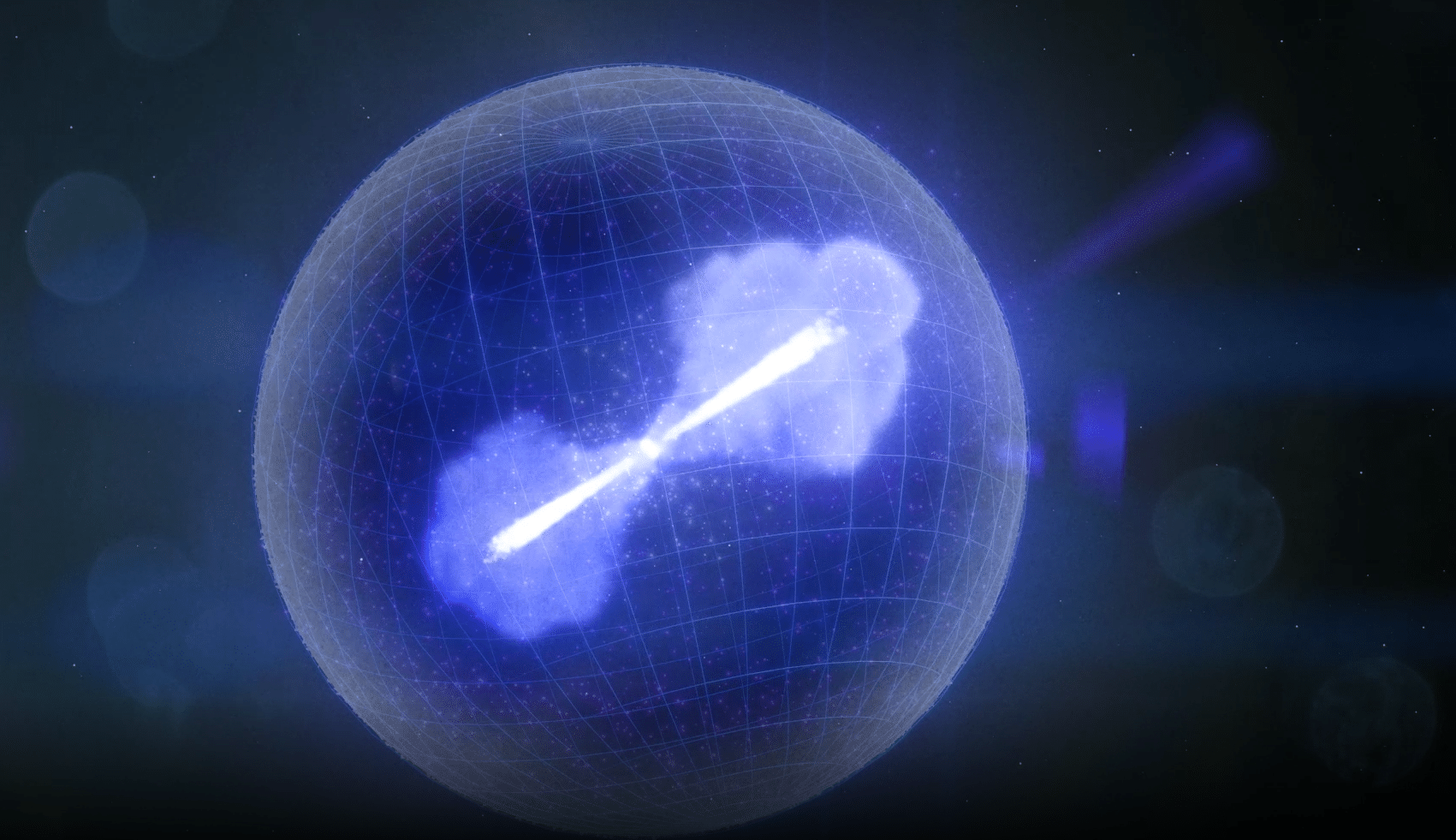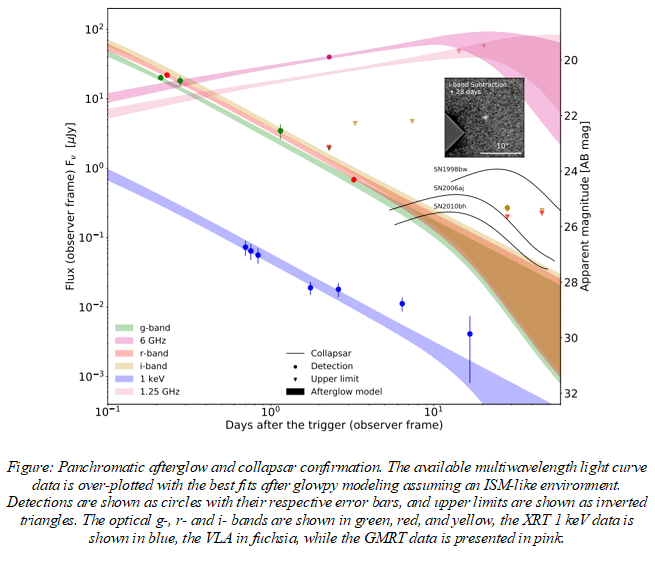
Short-duration gamma-ray bursts have long been suspected on theoretical grounds to arise from compact object binary mergers. Recently, astronomers detected a short-duration gamma-ray burst that lasted for just 0.65 seconds.
This short, but powerful burst named GRB 200826A, was originated from a dying star. The burst had been racing toward Earth for nearly half the present age of the universe. This is the first time astronomers have found that a dying star can produce short bursts too.
The discovery was made through NASA’s Fermi Gamma-ray Space Telescope on August 26, 2020, by several scientists across the world, including Dr. Shashi Bhushan Pandey from Aryabhatta Research Institute of Observational Sciences (ARIES), an institute of the Department of Science and Technology (DST), as well as scientists from other Indian institutions. From India, The Inter-University Centre for Astronomy and Astrophysics, Pune (IUCAA), National Centre for Radio Astrophysics – Tata Institute of Fundamental Research, Pune (NCRA) IIT Mumbai also participated in this work.
When a massive star is at the end of its life, its core suddenly collapses and forms a black hole. Some of the matter that is swirling around the black hole escapes in two powerful jets. These jets rush outward at almost the speed of light in opposite directions.

Each jet produces a pulse of gamma rays that last up to minutes. On the other hand, short GRBs form when pairs of compact objects spiral inward over billions of years and collide.
Bin-bin Zhang at Nanjing University in China and the University of Nevada, Las Vegas, said, “We already knew some GRBs from massive stars could register as short GRBs, but we thought this was due to instrumental limitations. Now we know dying stars can produce short bursts, too.”
Dr. Pandey explained, “Such a discovery has helped to resolve the long-standing issues related to gamma-ray bursts. Also, this study triggers to re-analyze all such known events to constrain number densities better.”
Within a day of the burst, NASA’s Neil Gehrels Swift Observatory discovered fading X-ray emission from this same location. A couple of days later, variable radio emission was detected by the National Radio Astronomy Observatory’s Karl Jansky Very Large Array in New Mexico. The team then began observing the afterglow with a variety of ground-based facilities.
The team also observed the faint galaxy associated with the burst using Gran Telescopio Canarias. It was found that its light takes 6.6 billion years to reach us.
To prove this short burst came from a collapsing star, scientists needed to catch the emerging supernova.
Leo Singer, a Goddard astrophysicist, and Ahumada’s research advisor said, “If the burst was caused by a collapsing star, then once the afterglow fades away it should brighten again because of the underlying supernova explosion. But at these distances, you need a very big and very sensitive telescope to pick out the pinpoint of light from the supernova from the background glare of its host galaxy.”
To conduct the search, astronomers imaged the host galaxy in red and infrared light starting 28 days after the burst. They repeated the same search 45 and 80 days after the event. They detected a near-infrared source – the supernova – in the first set of observations that could not be seen in later ones.
Based on the observation, the team suspected that this burst was powered by jets that barely emerged from the star before they shut down, instead of the more typical case where long-lasting jets break out of the star and travel considerable distances from it.
The Gamma-ray burst was a sharp blast of high-energy emission lasting just 0.65 seconds.
According to scientists, “Collapsing stars producing short GRBs must be marginal cases whose light-speed jets teeter on the brink of success or failure, a conclusion consistent with the notion that most massive stars die without producing jets and GRBs at all.”
Journal Reference:
- Tomas Ahumada et al. Discovery and confirmation of the shortest gamma-ray burst from a collapsar. arXiv: 2105.05067v2
Continue reading Astronomers detected the first short-duration gamma-ray burst on Tech Explorist.

0 comments:
Post a Comment